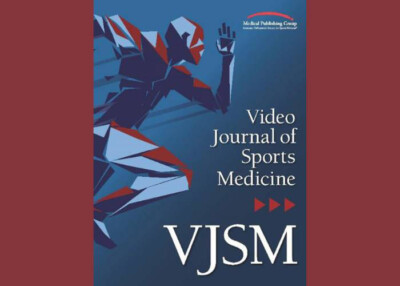
Authors:
Chukwuma T. Iwuoha, MA, Luke V. Tollefson, BS, Joey Larson, BS, Nicholas I. Kennedy,MD, and Robert F. LaPrade, MD, PhD
*Investigation performed at Twin Cities Orthopedics, Edina, Minnesota, USA
Abstract:
Background:
The fabella is a sesamoid bone that is a normal anatomic variant yet a rare cause of pathology in the posterolateral portion of the knee. The fabella can cause chronic knee pain in patients with knee osteoarthritis and athletes at all levels and in are cases can cause neuropathy. Initially, treatment for a painful fabella includes conservative measures, with surgical intervention after conservative treatments have failed. This technique describes our arthroscopic-assisted fabella removal technique with a concomitant medial meniscus revision repair.
Indications:
The goal of treatment is to relieve pain and numbness. Conservative measures (i.e., nonsteroidal anti-inflammatory drugs [NSAIDs], range of motion exercises, heel cord stretching, etc.) are the initial step in treatment. Patients are treated surgically after conservative measures have failed. The surgical approach involves an open incision, arthroscopy, or a combination.
Technique Description:
With the patient in the supine position, a physical examination is performed under anesthesia to compare to validate clinical findings. An open lateral knee approach helps to locate the fabella which is grasped with an Alice clap. An arthroscopy is performed, and viewing posterolaterally will confirm that the fabella is within the grips of the Alice clamp. After repair of the meniscus, the surgical bed is repositioned to identify the fabella properly. Excision of the fabella is performed sharply from the lateralgastr ocnemius tendon, and palpation is demonstrated to ensure complete removal. Caution is essential to avoid complications including damage to nearby anatomic structures, such as the lateral gastrocnemius tendon, and incomplete fabella removal.
Results:
A clinical study by Dekker et al reported that 80% of patients were able to return to full activities and postoperative patient-reported outcomes improved from preoperative to postoperative. Fabella excision is recommended for patients with fabella pain who do not respond to conservative treatment.
Discussion:
We describe a technique for removing the fabella with arthroscopic assistance. Patients who have not responded appropriately to conservative treatment for a painful fabella should consider surgical intervention. With the early initiation of rehabilitation, patients will have an increased likelihood of decreased pain, resolution of symptoms, and reduced knee stiffness.
Patient Consent Disclosure Statement:
The author(s) attests that consent has been obtained from any patient(s) appearing in this publication. If the individual may be identifiable, the author(s) has included a statement of release or other written form of approval from the patient(s) with this submission for publication
You can download the study: Arthroscopy-Assisted Open Fabella Excision With Medial Meniscus Revision Repair
